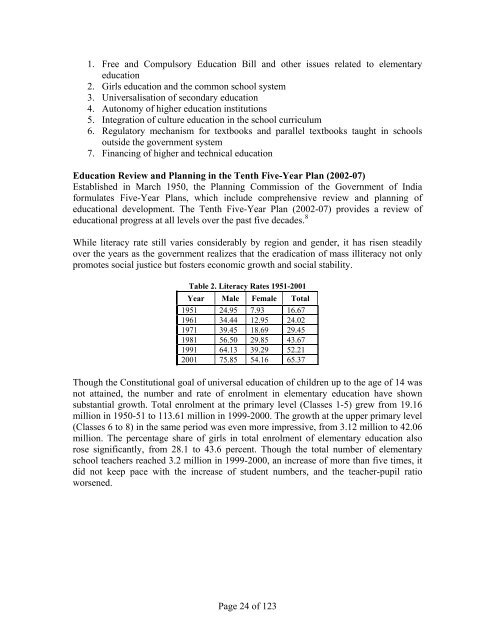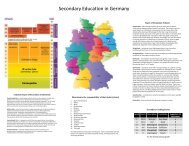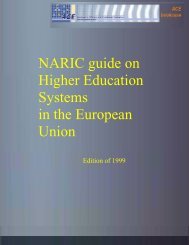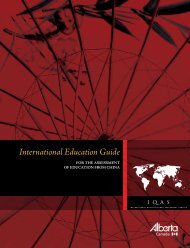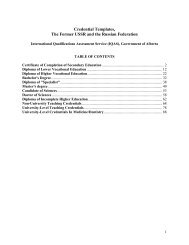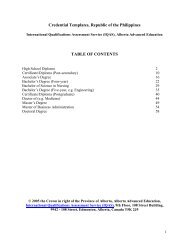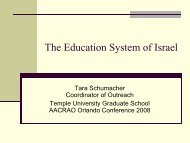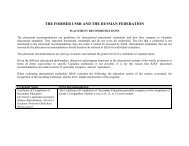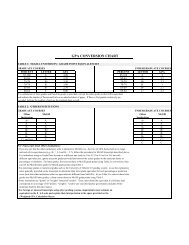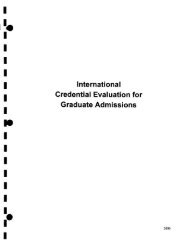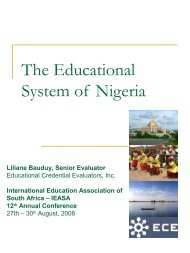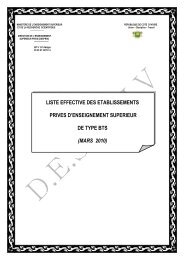International Qualifications Assessment Service (IQAS) - Shelby ...
International Qualifications Assessment Service (IQAS) - Shelby ...
International Qualifications Assessment Service (IQAS) - Shelby ...
Create successful ePaper yourself
Turn your PDF publications into a flip-book with our unique Google optimized e-Paper software.
1. Free and Compulsory Education Bill and other issues related to elementary<br />
education<br />
2. Girls education and the common school system<br />
3. Universalisation of secondary education<br />
4. Autonomy of higher education institutions<br />
5. Integration of culture education in the school curriculum<br />
6. Regulatory mechanism for textbooks and parallel textbooks taught in schools<br />
outside the government system<br />
7. Financing of higher and technical education<br />
Education Review and Planning in the Tenth Five-Year Plan (2002-07)<br />
Established in March 1950, the Planning Commission of the Government of India<br />
formulates Five-Year Plans, which include comprehensive review and planning of<br />
educational development. The Tenth Five-Year Plan (2002-07) provides a review of<br />
educational progress at all levels over the past five decades. 8<br />
While literacy rate still varies considerably by region and gender, it has risen steadily<br />
over the years as the government realizes that the eradication of mass illiteracy not only<br />
promotes social justice but fosters economic growth and social stability.<br />
Table 2. Literacy Rates 1951-2001<br />
Year Male Female Total<br />
1951 24.95 7.93 16.67<br />
1961 34.44 12.95 24.02<br />
1971 39.45 18.69 29.45<br />
1981 56.50 29.85 43.67<br />
1991 64.13 39.29 52.21<br />
2001 75.85 54.16 65.37<br />
Though the Constitutional goal of universal education of children up to the age of 14 was<br />
not attained, the number and rate of enrolment in elementary education have shown<br />
substantial growth. Total enrolment at the primary level (Classes 1-5) grew from 19.16<br />
million in 1950-51 to 113.61 million in 1999-2000. The growth at the upper primary level<br />
(Classes 6 to 8) in the same period was even more impressive, from 3.12 million to 42.06<br />
million. The percentage share of girls in total enrolment of elementary education also<br />
rose significantly, from 28.1 to 43.6 percent. Though the total number of elementary<br />
school teachers reached 3.2 million in 1999-2000, an increase of more than five times, it<br />
did not keep pace with the increase of student numbers, and the teacher-pupil ratio<br />
worsened.<br />
Page 24 of 123


